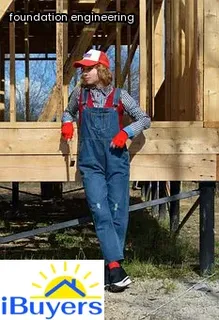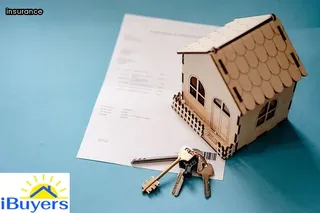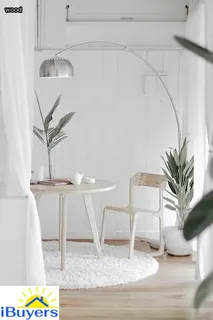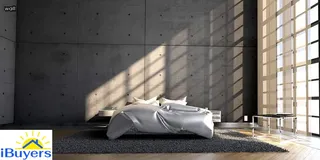Identifying structural damage to your home can be a daunting task, but it is important to do so in order to prevent further damage from occurring. Taking into account the age and condition of your home, there are several possible signs of structural damage that you should look for.
Cracks in walls or floors are an indication that something is wrong, as is any sagging or unevenness in the floorboards. Doors and windows may not open or close properly if there is structural damage, and you may even see buckling or bulging in walls.
If you have a basement or crawl space, look for water stains on the ceiling and walls; this could indicate a leak in the foundation which could lead to more serious problems later on. Likewise, inspect any staircases closely - if they wobble when walked upon, it’s likely due to structural damage.
Finally, make sure to check out the exterior of your house - discoloration on bricks or stucco could be indicative of water seepage which could threaten the stability of your home's structure over time. Keeping an eye out for these warning signs will help keep your house safe and sound.

Structural damage to your home can be a huge problem, but if you know what to look for and how to repair it, the process can be much smoother. Start by inspecting any cracks in the walls or ceilings of your home; these could signal that there is structural damage that needs to be addressed.
If there are no obvious signs of problems, you may need to take a closer look at the foundation of the house, as well as its roof and attic. Check for water damage around windows and doors, as moisture can cause structural damage over time.
Once you’ve identified any issues that need addressing, contact a professional who specializes in repairing structural damage. They will be able to assess the extent of the problem and provide an estimate for repairs.
Depending on the severity, this could involve shoring up sagging floors or walls with extra support beams or replacing damaged wood components with new ones. Be sure to hire a reputable contractor who has experience in this type of work so that you can rest assured that your home is safe and sound once again!.
Assessing the severity of structural damage to your home can be a daunting task. Before beginning any repairs, it is important to get an accurate assessment of the scope and severity of the damage.
A professional inspection can help you determine what type of repair is necessary and how extensive the repairs will be. The inspection should include a visual inspection of all accessible areas, checking for signs of rot, cracks, or other structural damage.
In addition, you may need to have an engineer or architect inspect the home to assess its overall stability and recommend any necessary repairs or changes to prevent further damage in the future. If the damage is more extensive than expected, you may need to consult with a contractor who specializes in structural repairs.
It is essential that you get the best advice possible so that your home remains safe and secure for years to come. With proper assessment and understanding of what needs to be done, you can ensure that your home remains in top condition for years to come.

Understanding the causes of home structure damage is key to successfully repairing it. Common culprits include water damage, foundation settling, or even natural disasters.
Water damage can be caused by burst pipes, heavy rains, flooding or a leaking roof. If unchecked, the moisture can weaken wood and cause dry rot or mold growth.
Foundation settling is often due to soil eroding beneath the house and causing it to sink and create cracks in walls and floors. Natural disasters such as earthquakes, tornadoes, hurricanes or wildfires can also cause serious structural damage to homes.
It’s important to identify the source of the problem and take corrective measures before attempting repairs to ensure further damage isn’t done. A professional inspection by a qualified contractor may be necessary in order to assess the extent of the damage.
Taking these steps will help you make informed decisions about how best to repair your home’s structural damage.
When it comes to maintaining the structure of your home, it is important to be aware of any signs that could indicate structural damage. These could include cracks in the walls or ceilings, doors and windows that don't close properly, gaps between walls and ceilings, uneven floors, and visible water damage around the foundation.
It is essential to pay attention to these signs and repair them as soon as possible in order to avoid further damage. Further signs of structural damage may include sagging roof lines or walls that appear bent or bulged.
If you notice any of these issues, it is important to contact a professional for an inspection in order to determine what repairs need to be done and if the structure of your home has been compromised. In some cases, even minor cracks can cause major issues with the overall stability of your home so it is best to take action sooner rather than later.

When assessing the amount of insurance coverage you need for structural repairs, the first step is to determine the scope and extent of damage. It's important to get a comprehensive inspection from a certified home inspector or general contractor, as they can provide an accurate evaluation of the condition of your home's structure.
This will help you understand what type and how much work needs to be done. Afterward, contact your insurance provider and explain the damage that has been found.
While some types of structural damage may be covered by your policy, others may not be. Make sure to ask questions about deductibles, out-of-pocket costs, and any limitations or exclusions in your policy so you know exactly what is covered.
Once you know what is not covered by your insurance policy, you can decide whether it makes financial sense to purchase additional coverage or if it’s something you can pay out-of-pocket for. Taking these steps will ensure that you are adequately prepared when making repairs to structural damage in your home.
Roofs are often the most exposed part of any home, and as such can suffer from considerable structural damage. The extent of the damage can vary hugely, depending on factors such as climate, material type and location.
As a result, it is important to regularly inspect your roof for signs of wear and tear and take steps to repair any issues you find. This can include replacing broken tiles or shingles, mending leaks or cracks, or even replacing an entire section of your roof in more severe cases.
It is always best to carry out investigations and repairs as soon as possible to avoid further damage that could be more costly in the long run. Depending on your needs, you may need to hire a professional contractor who will be able to assess the situation and advise accordingly on what action needs to be taken.
Additionally, make sure that you use quality materials when carrying out repairs; this will ensure that they remain durable over time and provide maximum protection for your home.

Repairing structural damage to your home can be a daunting task, but it doesn’t have to break the bank. In many cases, you can do the repairs yourself with just a few simple tools and techniques.
Before attempting any DIY fixes to structural problems, however, it is important to understand the basics of home repair and how to identify potential hazards. To start, it’s best to get an assessment of your home’s structural integrity from a professional inspector or engineer.
Once you know what work needs to be done and which areas are unsafe, you can begin making repairs. For minor repair jobs such as fixing cracks in walls or ceiling joists, using a hammer and nails might suffice.
More complex tasks like replacing damaged floor joists may require specialized tools such as saws and jacks. Additionally, keeping an eye out for signs of water damage is essential for preventing further damage from occurring.
This includes checking for leaks around windows, doors, and pipes regularly. Taking the time to inspect your home for structural damage and repairing it accordingly will help ensure your safety over the long run.
It is often best to hire a professional to address structural damage to your home as they are experienced in assessing the extent of the damage, making repairs, and ensuring the safety of your home. Not only do they possess the necessary knowledge and skills to identify and repair structural problems, but they also have access to specialized tools and materials that may not be available in stores.
A professional will be able to provide an accurate estimate of the cost of repairing structural damage and can advise you on the best course of action for your particular situation. Furthermore, hiring a professional contractor can help speed up the process for getting your home back into proper condition as quickly as possible.
They know how to handle any unforeseen problems or complications that may arise during repairs and can ensure that everything is done correctly according to local building codes.

When it comes to repairing structural damage to your home, sticking doors and cracked windows are two of the most common issues that need to be addressed. Often times these problems can be remedied relatively easily with some simple tools and materials.
For a sticking door, it’s usually a matter of adjusting the hinges or replacing the door frame itself. In terms of cracked windows, a sealant or caulk can be used to fill in any gaps, while also providing insulation against air and water infiltration.
Additionally, if necessary you may need to replace parts such as window sashes or weather stripping. Either way, with the right materials and knowledge you can make sure that your home is structurally sound and free from any further damage.
Bouncy floors can be a warning sign of structural damage in your home that needs to be addressed. When walking over a bouncy floor, it is important to look out for any other signs of damage.
These can include cracked walls, tilted ceilings, and door frames that no longer fit correctly. A house with these types of issues will require repair work that is beyond the scope of homeowner DIY projects.
If you notice any of these warning signs it is essential to seek professional help to make sure your home is safe and sound. It can be tempting to ignore these issues, but it is much more cost effective in the long run to address them as soon as possible before they become an even bigger problem.

Foundation and ceiling cracks can be signs of structural damage in your home, so it's important to take action as soon as you notice them. Repairing these cracks is essential for maintaining the integrity of your home's structure.
Depending on the severity of the crack, you may need to enlist a professional contractor to help with repairs. The first step is to identify the type of material that needs repair.
Common materials for foundations and ceilings are concrete, brick, stucco, and wood. Once you know the material, you can assess the extent of the damage and determine what kind of fix is necessary.
This could include anything from filling small cracks with a patching compound to replacing sections of damaged material. Additionally, if water is seeping through a foundation or ceiling crack, this could indicate more serious underlying issues like drainage problems or rotting wood that require further investigation.
Taking action quickly is key when dealing with structural damage in your home; seeking professional help can ensure that any repairs are done correctly and safely.
Yes, structural damage to a house can be fixed. Typically, repairing structural damage requires the help of a professional contractor who is experienced in dealing with these types of issues.
Depending on the severity of the damage and its location, various methods such as shoring up existing structures or replacing them altogether may be used to repair structural damage to your home. It is important to assess the extent of the damage and make sure that it does not pose any safety risks before attempting any DIY repairs.
If you are unsure about how to properly repair structural damage, it is best to hire a professional contractor who can evaluate the problem and provide guidance on how to fix it correctly.

Structural damage to a house can refer to any damage that compromises the structural integrity of the building. This includes damage to load-bearing walls, foundations, and beams as well as major repairs due to water intrusion or pest infestation.
Structural damage is not limited to just physical damage, but also includes any issues that may cause instability such as wood rot, termite or other pest infestations, and soil erosion. Structural damage can be caused by a wide variety of factors including natural disasters such as floods and earthquakes, human error, or simply from the wear and tear of time.
It’s important for homeowners to inspect their homes regularly for signs of structural damage so they can identify any potential problems before they become larger issues. Understanding what is considered structural damage will help homeowners ensure their home remains safe and secure for years to come.
When structural damage has been found out, it is important to take immediate action in order to prevent further damage and ensure the safety of your home. Depending on the severity of the structural damage, you may need to contact a professional contractor or structural engineer to assess the problem.
Generally speaking, repairs may include replacing damaged support beams, beams, joists, columns, and other load-bearing elements. If there is any visible corrosion or rot present on wooden components, those should be replaced as well.
In some cases, additional bracing may be needed in order to reinforce weakened sections of the structure. It is also important to inspect for water leaks that could lead to mold and mildew growth as this can have lasting effects on the health of your family.
The repair process may involve pulling permits from local building departments and hiring an inspector to review the work before completion. Ultimately, it is essential that all damaged materials are properly replaced and reinforced in order to maintain a sound and safe structure for years to come.
Structural damage to a home can be caused by natural disasters, such as floods and earthquakes, or by age-related deterioration. Structural problems refer to any issue that jeopardizes the stability of a house or building.
These issues can range from minor cracks in walls or ceilings to major problems such as a shifting foundation or crumbling supports. Major structural damage often requires professional help to repair and restore the structure of the home.
Foundation issues can be caused by water damage due to flooding, soil erosion, poor construction practices, or simply aging materials. Other common structural problems include roof damage from storms or other weather conditions; warped floors due to changes in humidity; sagging ceilings; and cracked walls.
Understanding what is considered a structural problem is important for homeowners so they can take action quickly if needed. Professional help may be necessary when it comes to repairing structural damage, but being aware of the possible signs and symptoms can help homeowners stay proactive about their home's safety and stability.